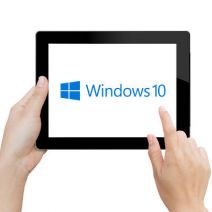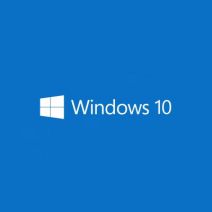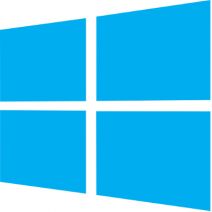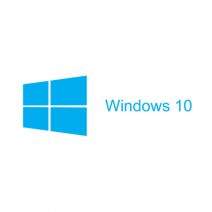Network Synergy Blog
In an overwhelming response to a ZDNet survey, 73 percent of all respondents claim that they will be adopting Windows 10 within the next two years. This exceeds the approval rates of both Windows 7 and 8, making Windows 10 one of the most anticipated operating systems in recent times. Here are some of the statistics concerning the update to Windows 10:
- 64 percent of IT professionals said they were most interested in the return of the Start button, 55 percent cited the free upgrade from Windows 7 and 8/8.1, and 51 percent referenced enhanced security.
- Only eight percent of respondents said they were interested in the touch-optimized interface, six percent cited Cortana, and five percent were interested in Hello.
- When IT professionals were asked to disclose their general impressions of Microsoft's new browser Edge (previously known as Spartan) 25 percent said they were somewhat to very positive, 23 percent said they were neutral, and nearly half said they didn't know enough about the new browser to have formed an opinion. Four percent of respondents were somewhat to very negative.
While many users are simply interested in the free upgrade and the return of the Start menu, they don't necessarily expect a lot from the other features, like touch-screen compatibility and Cortana. Still, upgrades are upgrades, and the significant number of anticipated upgrades makes us happy. As IT professionals, we always emphasize the importance of running a supported operating system, as well as how much the latest technology can improve your business's productivity. Even if users aren't immediately upgrading to Windows 10, so long as they aren't opting to continue using an unsupported operating system, they're doing something right.
However, these numbers also tell us that there are a lot (as in, the majority) of businesses that plan on leaving behind their legacy applications, or finding more modern solutions that better handle their workload. Many users don't take into account the fact that their legacy software might not perform to top specifications, or even be compatible at all, with the latest technology. This can prevent your business from getting the most out of its information systems.
We worry that this might be the case with Windows 10. Because of Microsoft labeling it as "free" for users of Windows 7 and 8/8.1 for a whole year following its release, many users feel an enormous amount of pressure to upgrade before this offer's expiration date. If this sounds familiar, we want to reiterate that you should carefully consider any and all applications that you currently use, especially if they qualify as legacy software.
Should You Upgrade?
Network Synergy recommends a cautious approach to upgrading your systems. Below is more information about Windows 10 that you should know.
- Windows 10 is a free upgrade for genuine Windows 7, 8 and 8.1 operating systems. Microsoft is offering this free upgrade for one year, until July, 2016.
- Network Synergy always cautions our customers on immediately adopting new Operating System upgrades to prevent compatibility issues with business applications, which will undoubtedly surface with any new OS upgrade. Microsoft has made this cautious-to-upgrade approach difficult to abide by, due in part to its marketing strategy of sending Windows 7 and 8.1 users a notification that Windows 10 is now available and that the upgrade is free to licensed users. This message may appear for workstations automatically updating Windows patches from Microsoft directly. This notification would be seen in your System Tray if this update notification was downloaded to your computer. We can work with you if you are receiving notifications to eliminate the upgrade popups that you may be receiving.
- Please note that Windows 10 will not be automatically updated on your system without your intervention. Microsoft however will give users the option to upgrade with one click of "Yes" or "Go!" This is not recommended on your business computers without proper testing with all applications. Worst-case scenario: You've got a mission-critical app that isn't compatible with Windows 10, and you don't find this out until after you've installed the new OS. While Microsoft makes upgrading to a new OS easy, downgrading to an older OS is a very difficult and time-consuming task that you don't want to experience. Additionally, the new features of Windows 10 can potentially displace existing workflows if one isn't prepared.
- Internet Explorer has been replaced with a new web browser, Microsoft Edge. While this new browser likely has advantages over IE, it's important to keep in mind that its new interface may befuddle longtime IE users. Plus, it's rare for a 1.0 product to be error free upon its release.
- While consumers will often jump on a new OS download as soon as it's released, it's a safe move for enterprises to wait until the first service pack comes out. A conservative move like this will prevent your business from being a beta tester for Microsoft. We do, however, also caution customers on upgrading home computers that may be used for office network access, particularly with VPN access. Please contact us if you remotely access your network to review possible compatibility issues.
- In addition to having compatibility issues with older software, you might see issues with the compatibility of older peripherals, like scanners, printers, optical drives, etc. If Microsoft has deemed these devices obsolete, then your previously-functioning equipment will now be a paperweight. Additionally, there's the potential to lose data and settings, in particular, Internet Explorer settings.
- If there is interest in adopting the new operating system quickly, it is recommended to take one non-critical workstation in your office and upgrade to test with all existing applications. This will identify potential software upgrades that need to be addressed for your business prior to upgrading all systems.
In conclusion, we think that Windows 10 has a lot going for it, but like any major business decision, it's not a new venture that you want to blindly take on. Network Synergy is here to help. Network Synergy is testing Windows 10 to identify potential upgrade requirements for many of the applications that we deploy for our customers. If you have immediate interest in upgrading, please contact your account manager to discuss the best upgrade plan for you to make sure we provide the smoothest transition possible to Windows 10.




















